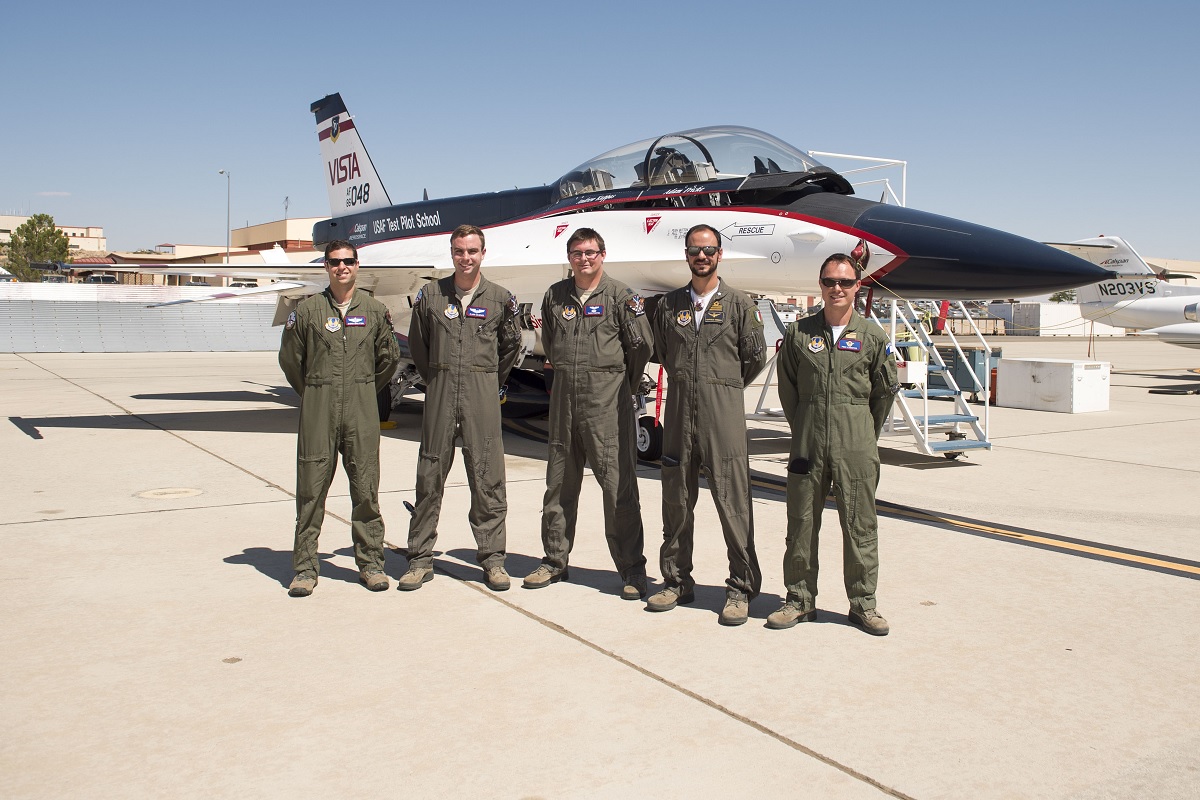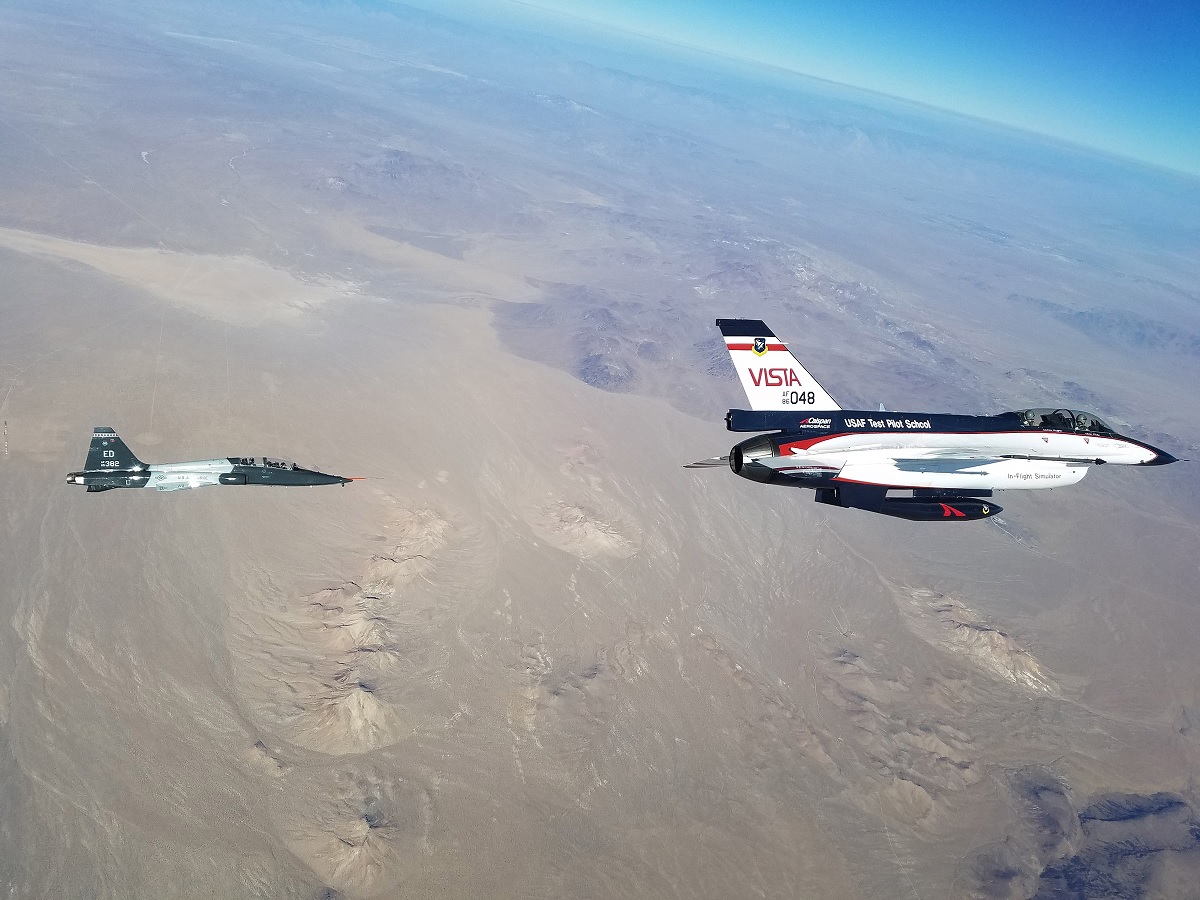When outfitted as a C-17, for example, VISTA’s highly modified F-16 will react like a C-17, not an F-16, simulating the flight characteristics of many different aircraft
Students at Edwards Air Force Base (AFB) Test Pilot School (TPS) finished testing an innovative aircraft control system that is intended to add a margin of safety to aviation in 2016, as stated by Christopher Ball, 412th Test Wing Public Affairs in his article VISTA gives TPS a clearer view of the new flight control system.
When installed as a backup system in any fly-by-wire aircraft, the L1 Adaptive Control System is a software system that can quickly learn the flying characteristics of the aircraft and then help the aircraft in the event of a control surface or system failure.
It was created and tested here by a team of TPS students from class 16A. It was conceived and built by a professor and two graduate students from the University of Illinois, Urbana Champaign.
The Aeronautica Militare Italiana (AMI, Italian Air Force) Capt. Raffaele Odesco, French Air Force Maj. Nicolas Langevin, and test pilots Capt. Daniel Edelstein, as well as flight test engineers Capts. Craig Porter and Clark McGehee made up the TPS team.
After finishing the one-year program, graduates of the Test Pilot School are awarded a master’s degree in scientific in-flight testing.
“In order to get a master’s, you need to do a project of some sort,” Cotting said. “Typically you do a master’s thesis. We have our students do a group project. The idea is we want them to take the lessons they’ve learned in how to plan and execute a flight test and actually go do that.”
The typical flight test procedure might have been costly and time-consuming because the controller is adaptive and made to work on any fly-by-wire aircraft. The NF-16 Variable-stability In-flight Simulator Test Aircraft, also known as VISTA, was chosen by the class to test the system.
The F-16 VISTA is an experimental aircraft that is based on the F-16 Fighting Falcon, which General Dynamics and Calspan jointly modified for use by the USAF.
The multi-axis thrust vectoring (MATV) engine nozzle on the F-16 VISTA testbed aircraft allows for more active management of the aircraft in a post-stall scenario. The end product is a super maneuverable aircraft that maintains pitch and yaw control at angles of attack when conventional control surfaces are unable to change attitude.
Although the VISTA program was deemed successful, fighter versions without thrust vector control (TVC) were never produced.

Additionally, the program was significant for the creation of Direct Voice Input and the “Virtual HUD,” both of which were subsequently included in the cockpit design for the F-35 Lightning II (with the F-35B variant additionally employing MATV while hovering to offer attitude control).
Calspan currently runs and maintains the VISTA aircraft for TPS. It is frequently employed in academic projects like the one discussed in this article as well as other unique student curriculum initiatives.
This heavily modified F-16, however, can mimic the flight characteristics of numerous different aircraft. If the aircraft is configured as a C-17, for instance, when the pilot uses the flying controls, the aircraft will react like a C-17, not an F-16, according to Ball.
“We can make the aircraft fly like anything we want within its performance envelope. We have safety trips on it so if the aircraft goes to an attitude we’re uncomfortable with it will trip off and a safety pilot will have the original aircraft fly safely,” Cotting said.
“This allows us to put research flight control laws on there without having to go through the normal flight test process so we can literally go from basic design, test in a simulator, and go fly all in the same day, as opposed to the months it would take to go through the normal process,” Cotting said. “From a researcher’s point of view, you can see where that could be very advantageous.”
The L1 controller, according to Cotting, is a relatively innovative concept in that it doesn’t have to be aware of the characteristics of the airplane you’re placing it on.
“You give it some basic information about the airplane and the adaptive controller should be able to configure itself to make the aircraft fly like anything I tell it I want to fly like,” he said.
“So in our case, we use something called a reference model which is a set of dynamics we would like the airplane to fly,” he said. “We tell it some information about the aircraft, but not a lot, and then it goes and sorts out how to make the aircraft fly like the reference set of dynamics.”
Installing the controller on VISTA and evaluating the team’s performance estimates’ accuracy were also steps in the procedure. “We also wanted to test some different configurations of VISTA that are normally unsafe to fly and see how well this controller can recover the aircraft back to a reference set of dynamics that we do think is safe to fly,” Cotting said.
Any fly-by-wire aircraft can use the adaptive control system. The C-17 Globemaster II, the F-16 Falcon, the F-22 Raptor, and the F-35 Lightning II are a few of the fly-by-wire aircraft at Edwards. Fly-by-wire aircraft are also being produced for commercial usage by a large number of aircraft manufacturers, including Boeing and Airbus.

Photo by Capt. Craig Porter / U.S. Air Force

